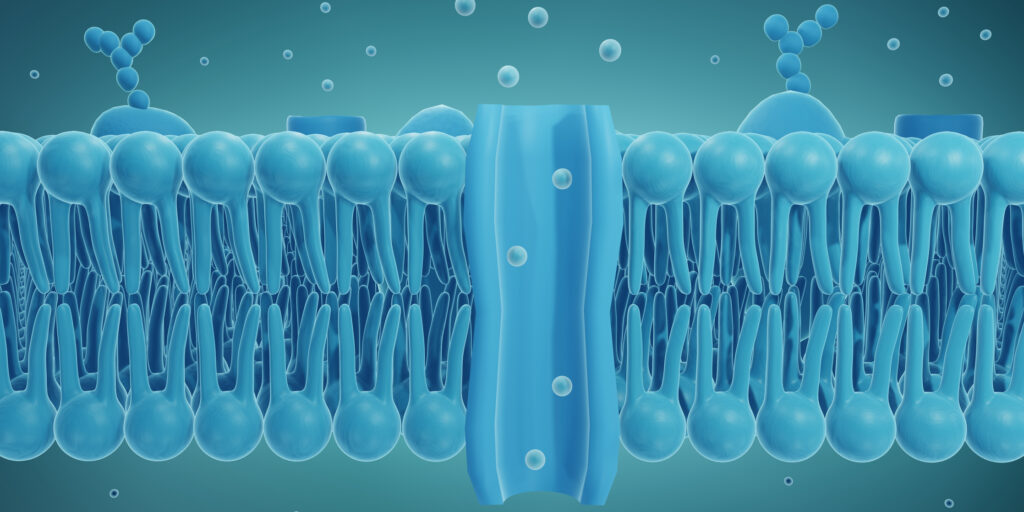
Simply Stated: What is Duchenne Muscular Dystrophy?
By Sujatha Gurunathan | Wednesday, February 16, 2022
5 Second Summary
“Simply Stated” is a Quest column designed to explain some terms and basic facts about neuromuscular diseases.
Find more at Mdaquest.org/tag/simply-stated
Duchenne muscular dystrophy (DMD) belongs to a group of rare genetic disorders, known as dystrophinopathies, that are caused by mutations of the dystrophin gene. DMD is characterized by progressive degeneration and weakness of the body’s voluntary muscles, primarily the skeletal muscles that control movement. In later stages, the heart and respiratory muscles may also be affected, leading to life-threatening complications. DMD primarily affects males and occurs in approximately 1 in 3,500 to 5,000 male births. About 12,000 people in the US are currently living with DMD.
Though there is currently no cure for DMD, recently approved therapies have enabled improvements in muscle function and quality of life. Furthermore, research advances and the promise of better therapeutics on the horizon offer hope for people living with this condition.
Symptoms of DMD
In people with DMD, the onset of symptoms can begin as early as 2 or 3 years of age, and the disease progresses rapidly. Muscle weakness is the primary symptom of DMD, with the limb muscles close to the body’s core (e.g. upper legs, pelvic area, upper arms, shoulder area) being affected first and those far from the body’s core (e.g. lower legs, forearms) weakening later in the course of disease. Usually, the muscles in the lower half of the body (e.g. pelvic muscles) are affected before those of the upper half of the body (e.g. shoulder muscles).
Children with DMD often exhibit delays in reaching developmental milestones, such as sitting or standing without assistance. They may also experience difficulty in actions such as walking, jumping, running, and climbing stairs. As the disease progresses, some children display additional symptoms such as enlarged calves, a waddling gait, an inward curve of the spine (lumbar lordosis), and abnormal locking of joints (contractures). As early as 4 to 5 years of age, some children with DMD use custom-molded nighttime ankle-foot braces to prevent contractures and prolong their ability to walk. By 10 to 12 years of age, most children with DMD require the use of a wheelchair. In addition to physical decline, about one-third of affected individuals display mild to moderate intellectual impairment and learning disabilities.
DMD Complications: Gastrointestinal Dysmotility, Cardiomyopathy, and Respiratory Failure
By their late teens, people with DMD may experience severe or life-threatening complications.
One complication that is sometimes associated with DMD is the weakening of muscles in the digestive tract. This may result in gastrointestinal dysmotility, a condition in which the passage of food through the digestive tract is impaired. Dysmotility can cause obstructions in the digestive tract and chronic constipation in people with DMD.
Almost all people with DMD who are older than 18 years of age develop a type of heart disease known as DMD-associated cardiomyopathy. This condition is caused by weakening of the heart muscles, which prevents the heart from pumping blood efficiently and can result in irregular heartbeats (arrhythmias) and heart failure. DMD-associated cardiomyopathy can worsen rapidly and become fatal.
Another serious complication of DMD is weakness and deterioration of the diaphragm and other muscles in the rib cage that help to move air in and out of the lungs. This can cause shortness of breath, difficulty coughing, increased susceptibility to respiratory infections (e.g., pneumonia) and potentially respiratory failure. Ultimately, cardio-respiratory failure (i.e. loss of cardiac and/or respiratory function) is the leading cause of death in people with DMD.
Causes of DMD
DMD was first described by the French neurologist Guillaume Benjamin Amand Duchenne in the 1860s. About 120 years later, in 1986, Professor Louis Kunkel and his team at Boston Children’s Hospital, supported by MDA, identified the genetic cause for DMD, mutations in the dystrophin (DMD) gene.
The DMD gene instructs the production of dystrophin, a protein that is essential for keeping muscle cells intact. Dystrophin works, in part, like a shock-absorber, acting to prevent muscle cell membranes from incurring damage when muscles contract and relax. Dystrophin also holds other important proteins in at the muscle cell membrane, helping to preserve the proper structure and function of muscle cells. The loss of dystrophin, therefore, leads to muscle damage and degeneration. In DMD, mutations in the DMD gene result in little or no production of dystrophin. In a related dystrophinopathy, Becker muscular dystrophy (BMD), mutations in the DMD gene result in production of a reduced amount or truncated form of dystrophin protein, leading to a milder form of DMD-like disease.
DMD is considered an X-linked inherited disorder that primarily affects males, though in rare cases, it can affect females. The term X-linked refers to the fact that the DMD gene is located on the X chromosome. Since boys are born with only one copy of the X chromosome, every boy who inherits an X chromosome with the mutated DMD gene will produce insufficient amounts of dystrophin protein and be affected by the disease. Girls, on the other hand, are born with two copies of the X chromosome. Therefore, a girl who inherits one mutated DMD gene may still have normal copy of the DMD gene on her other X chromosome and produce some dystrophin protein. Girls with one copy of the mutated DMD gene are known as carriers, and they can potentially pass on the mutated DMD gene to their children. DMD carriers are usually asymptomatic, however, some DMD carriers develop DMD-like symptoms. In rare cases, girls may have the same signs of DMD as boys if their cells preferentially use the copy of the X chromosome that carries the dystrophin mutation – a situation called “skewed X-inactivation.”
Current Management of DMD
In 2018, a panel of physician and scientist experts on DMD, in partnership with the US Centers for Disease Control and Prevention (CDC), updated the care considerations for DMD. This report is designed to guide physicians in evidence-based treatment of DMD and to improve care and quality of life for people living with DMD. While there are currently no treatments that can reverse the effects of DMD, several strategies can slow the progression of disease.
Multidisciplinary care, including cardiac, respiratory, endocrine, bone health and orthopedic management, is recommended for people with DMD in order to manage the varied symptoms experienced by each person. Healthcare providers may recommend exercise to help build muscle strength and prevent contractures. Sometimes surgery is recommended to treat contractures or scoliosis. Mechanical aids (e.g., canes, braces, and wheelchairs) are often prescribed to help with mobility.
In the last six years, a number of drugs have been approved by the FDA to treat DMD. Corticosteroids are commonly prescribed to people with DMD to slow the progression of muscle weakness and delay the loss of ambulation (walking ability) by up to two years. Two common corticosteroid drugs used to treat individuals with DMD are prednisone and Emflaza (deflazacort). Emflaza, which is marketed by PTC Therapeutics, was approved by the FDA for use in DMD in 2017. A drawback of corticosteroid therapy is that long-term use can lead to unwanted side effects, such as weakening bones and weight gain.
One particular category of DMD drugs uses a relatively new technology called “exon-skipping” and includes Exondys 51, Vyondys 53, and Amondys 45 from Sarepta Therapeutics, and Viltepso from NS Pharma. These drugs promote skipping over a section of genetic code (known as an “exon”) to avoid the DMD gene mutation, allowing the body to produce more of the dystrophin protein. Exondys 51 was the first targeted therapy approved to treat DMD in a subset of patients with a genetic mutation amenable to skipping exon 51, while Vyondys 53 and Viltepso were approved in December 2019 and August 2020, respectively, to treat another subset of patients with a mutation amenable to skipping exon 53. Amondys 45 was approved most recently, in February 2021, to treat a third subset of patients with DMD, specifically those with a mutation amenable to skipping of exon 45. Together, these currently available therapies benefit the ~30% of people with DMD who have genetic mutations amenable to skipping of exons, 51, 53, or 45.
In addition to corticosteroid and “exon-skipping” therapies, the small-molecule Translarna (Ataluren), marketed by PTC Therapeutics, is another treatment available for some people with DMD. Though Translarna is not yet approved in the US, it is approved in Europe for individuals with a form of DMD known as “nonsense mutation (nm) DMD.”
Evolving research and treatment landscape
Despite the availability of exon-skipping treatments for DMD, there are still unmet needs. More efficacious therapies would greatly improve the life of people with DMD, and curative therapies have not yet been achieved. Several new technologies are being investigated in the effort to develop new therapeutics for DMD, including drugs that can allow production of dystrophin by overcoming specific types of DMD mutations (i.e. nonsense mutations, frameshift mutations, etc.) and drugs that reduce inflammation and scarring (fibrosis) in muscles. Some drug candidates under investigation include:
Pamrevlumab (FibroGen) – An antibody designed to prevent excessive scarring, which can cause organs to fail, is in a phase 3 clinical trial. This study is looking at the combined effects of Pamrevlumab and corticosteroid treatment.
Vamorolone (ReveraGen BioPharma, Inc.) – A synthetic steroid, which appears to cause fewer side effects than corticosteroid therapies, will be studied in a phase 2 clinical trial beginning in 2022.
One promising therapeutic strategy that is under active investigation is the use of gene transfer therapy to introduce a healthy truncated version of the dystrophin gene into the muscle, correcting the underlying genetic defect in DMD. This strategy may require a single, or very few, treatment(s) to achieve long-term benefit. Intense clinical research into DMD provides hope for the future of gene transfer therapies. Some such therapies being investigated include:
SRP-9001 (Sarepta) – A gene transfer therapy that is in a phase 3 (EMBARK) clinical trial.
SGT-001 (Solid Biosciences) – A gene transfer therapy that is in a phase 1/2 (IGNITE DMD) clinical trial.
PF-06939926 (Pfizer) – A gene transfer therapy that is in a phase 3 (CIFFREO) clinical trial.
In addition to the numerous drug candidates under investigation to treat DMD, observational studies are underway to better understand the causes and course of disease, identify biomarkers for DMD, and test the utility of interventions such as new wearable technologies. Additional information on clinical and observational studies for DMD can be found on clinicaltrials.gov.
People with DMD may be eligible to participate in the ongoing opportunities, including patient registries, which connect patients with actively recruiting clinical trials and collect data for use in research to improve clinical care. Some patient registries for people with DMD include:
- MDA’s MOVR (neuroMuscular ObserVational Research) Data Hub
- The Duchenne Registry
- CureDuchenne LinkTM
MDA’s Resource Center provides support, guidance, and resources for patients and families, including information about DMD, open clinical trials, and other services. Contact the MDA Resource Center at 1-833-ASK-MDA1 or ResourceCenter@mdausa.org.
Next Steps and Useful Resources
- MDA’s Resource Center provides support, guidance, and resources for patients and families, including information about Duchenne muscular dystrophy (DMD), open clinical trials, and other services. Contact the MDA Resource Center at 1-833-ASK-MDA1 or ResourceCenter@mdausa.org
- For more information about the signs and symptoms of Duchenne muscular dystrophy (DMD), as well an explanation of the causes of disease, an in-depth overview can be found here.
- To learn more about clinical study opportunities in DMD, visit clinicaltrials.gov
- Stay up-to-date on Quest content! Subscribe to Quest Magazine and Newsletter.
TAGS: Clinical Trials, Community Education, Drug Approval, Drug Development, Exon Skipping, Gene Therapy, Genetic Testing, Healthcare, Innovations, Research, Simply Stated
TYPE: Blog Post
Disclaimer: No content on this site should ever be used as a substitute for direct medical advice from your doctor or other qualified clinician.




